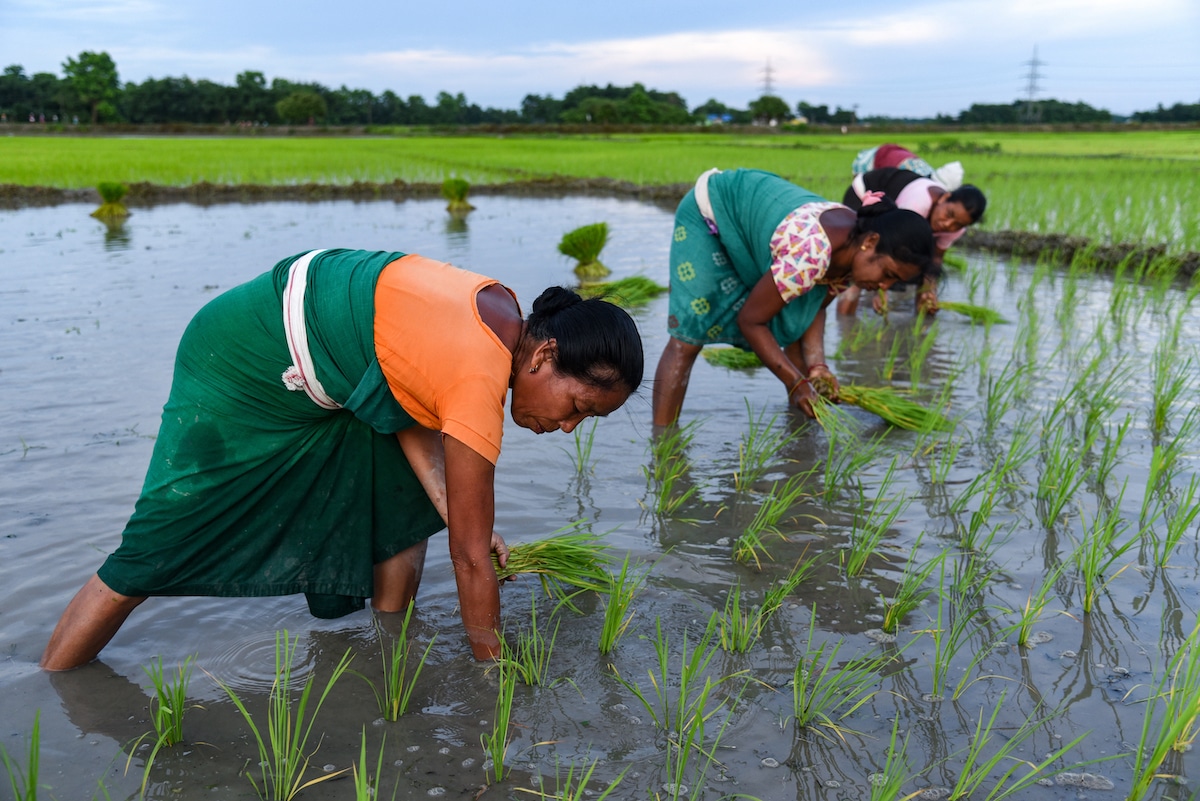Women Working in Agriculture Suffer Pay Discrimination, More Climate Shocks: FAO Report

 Why you can trust us
Why you can trust us
Founded in 2005 as an Ohio-based environmental newspaper, EcoWatch is a digital platform dedicated to publishing quality, science-based content on environmental issues, causes, and solutions.
Women who work in agriculture face significant inequalities, and the climate crisis is only making the situation worse.
That’s the conclusion of the UN Food and Agriculture Organization (FAO)’s first report in more than a decade focusing on women who work in agrifood systems.
“Women who work in agricultural production tend to do so under highly unfavourable conditions,” the authors wrote in the report, released Thursday. “They tend to be concentrated in the poorest countries, where alternative livelihoods are not available, and they maintain the intensity of their work in conditions of climate-induced weather shocks and in situations of conflict.”
The report, “The Status of Women in Agrifood Systems,” is much more comprehensive than a similar report from 2011, FAO’s Deputy Director of Inclusive Rural Transformation and Gender Equality Dr. Lauren Phillips, who helped prepare the report, told Carbon Brief. Instead of focusing solely on women in the narrower agricultural field, it looks at women who work in all agrifood systems, which it defines as “the entire range of actors and interlinked activities that add value in agricultural production and related off-farm activities such as food storage, aggregation, post-harvest handling, transportation, processing, distribution, marketing, disposal and consumption.”
Agricultural production, on the other hand, refers only to the raising, growing and harvesting of crops, livestock, fisheries and forests.
The field is important to many women’s livelihoods, employing 36 percent of all working women as of 2019. In some regions — especially sub-Saharan Africa and South Asia — it provides the bulk of their livelihood, with 66 percent of working women employed in agriculture in the former vs. 60 percent of working men, and 71 percent of working women employed in agriculture in the latter vs. 47 percent of men.
Yet women are not treated fairly in the field.
Women who work in agriculture make 82 cents for every dollar earned by men, and female farmers produce 24 percent less than male farmers on the same amount of land.
There are several reasons why these inequalities persist, including discrimination, strict gender norms, lack of access to land and technology and a disproportionate burden of unpaid care work in the home. But the status quo means that women in agriculture are more vulnerable when extraordinary events like the COVID-19 pandemic or a climate-fueled heat wave occur.
Following the pandemic, 22 percent of women working in non-farm agrifood systems lost their jobs compared to just two percent of men, and this meant that women faced 4.3 percent more food insecurity than men in 2021 compared to 1.7 percent more in 2019. When a climate-fueled extreme weather event like a heat wave occurs, women are more likely to continue working through it.
“While women are not inherently more at risk from climate change and shocks, resource and other constraints can make them more sensitive to their effects and less able to adapt to them, increasing their vulnerability,” the report authors wrote.
When an extreme weather event occurs, women are also less likely to be able to relocate to a more favorable location or access information about the climate crisis or tools to help them adapt.
There has been some progress made towards gender parity in agriculture, but more work needs to be done.
“There’s been positive change so far that more and more countries acknowledge women in their national policy frameworks around agriculture, but not many of them are necessarily proposing specific and concrete actions,” Phillips told Carbon Brief.
Yet boosting equality for women can only help everyone in the long term. The report found that closing both the gender pay gap and farm production gap would raise global Gross Domestic Product by almost $1 trillion as well as bring 45 million people out of food insecurity, reducing total food insecurity by around two percent.
“If we tackle the gender inequalities endemic in agrifood systems and empower women, the world will take a leap forward in addressing the goals of ending poverty and creating a world free from hunger,” FAO Director-General Qu Dongyu told UN News.
The report made three major recommendations for moving forward:
- Gather more high-quality gender-based data on women in agrifood systems to guide policy.
- Scale up local interventions that directly address gender-based inequality.
- Implement policies that specifically work to empower women and reduce gender-based inequalities.
This last point is especially important for helping women in agriculture adapt to the climate crisis.
“If policies were already responsive, and included women in policy processes, they’re much more likely to help women withstand shocks and to be resilient to shocks when they arrive,” Phillips told Carbon Brief.
Subscribe to get exclusive updates in our daily newsletter!
By signing up, you agree to the Terms of Use and Privacy Policy & to receive electronic communications from EcoWatch Media Group, which may include marketing promotions, advertisements and sponsored content.

 233k
233k  41k
41k  Subscribe
Subscribe 




